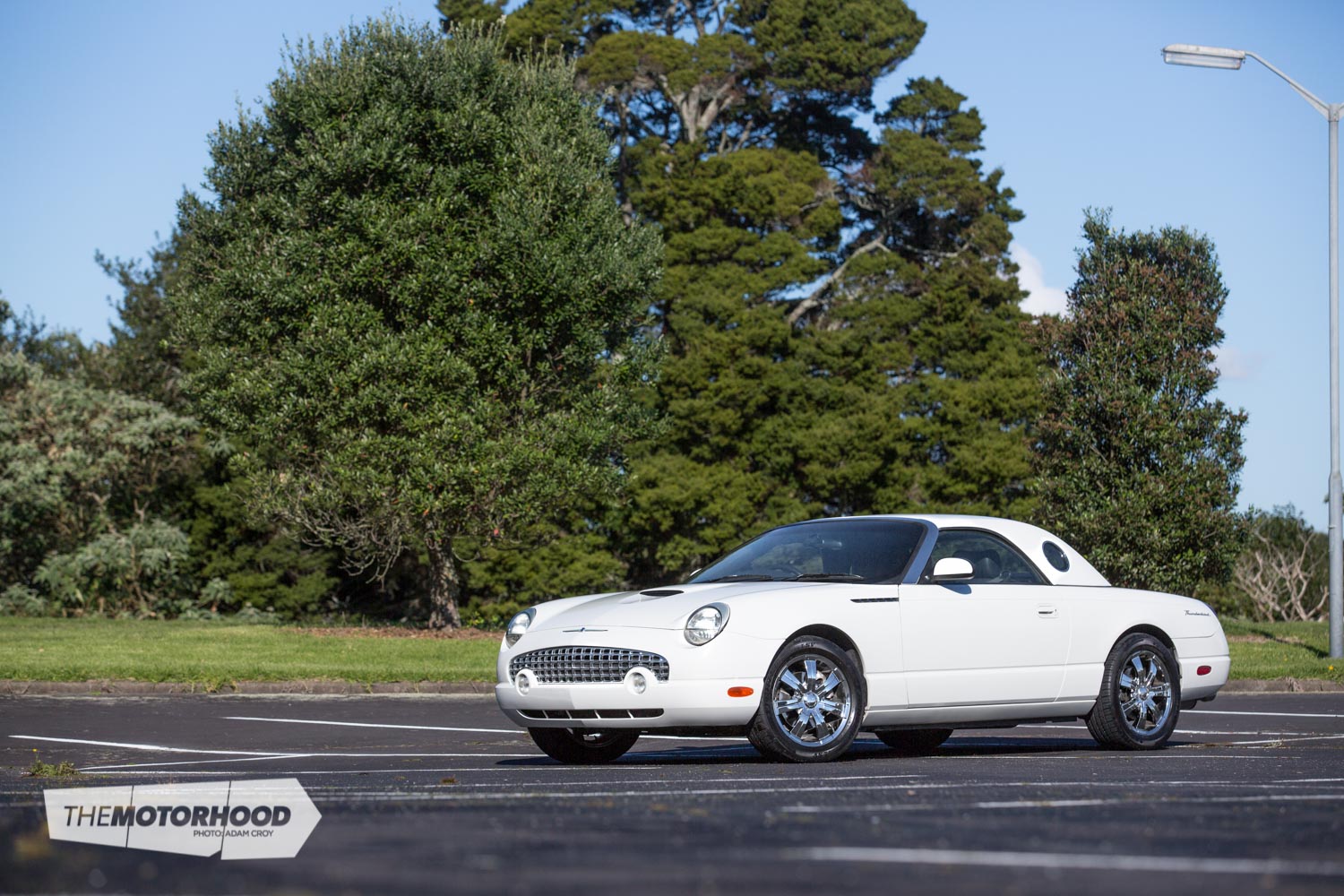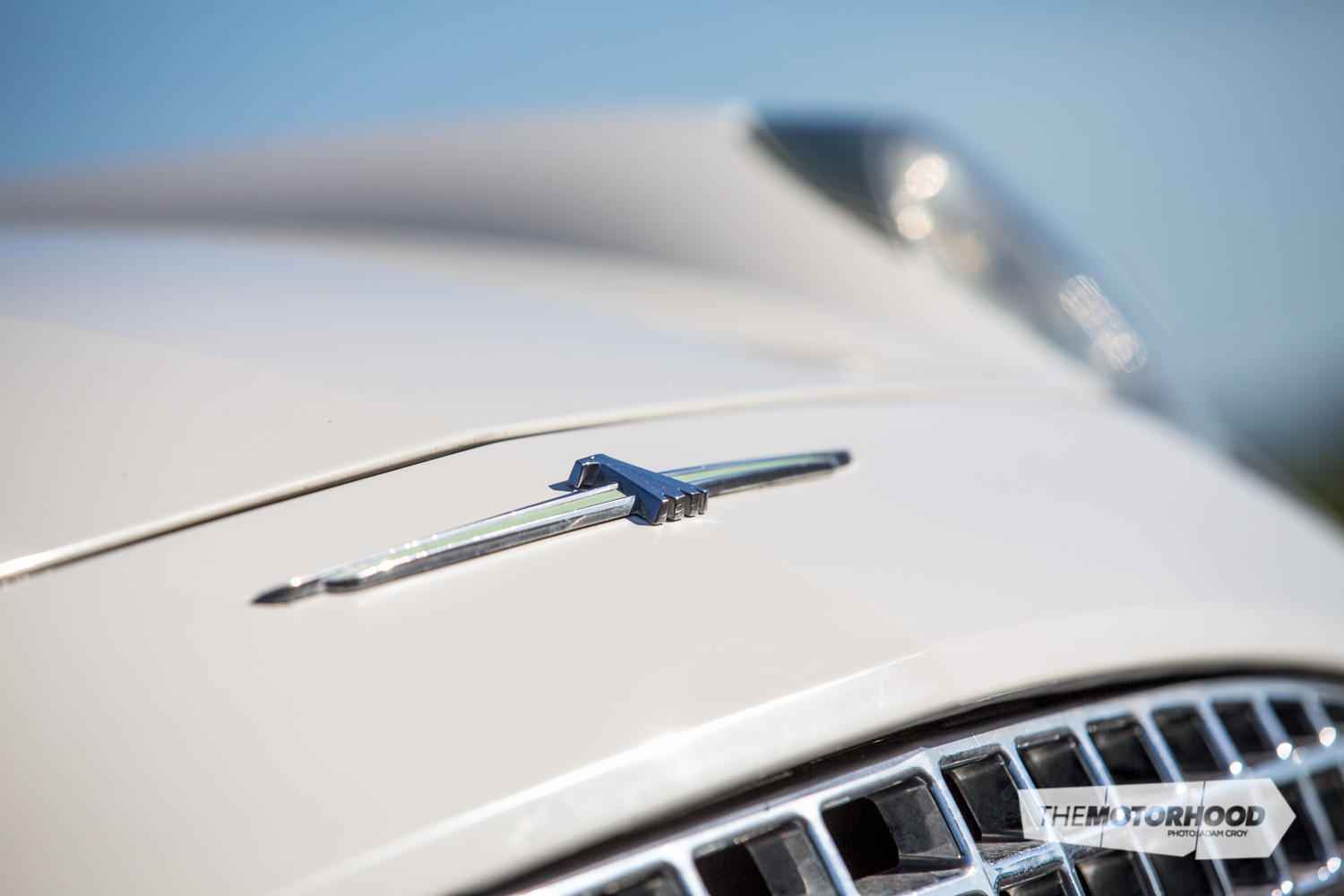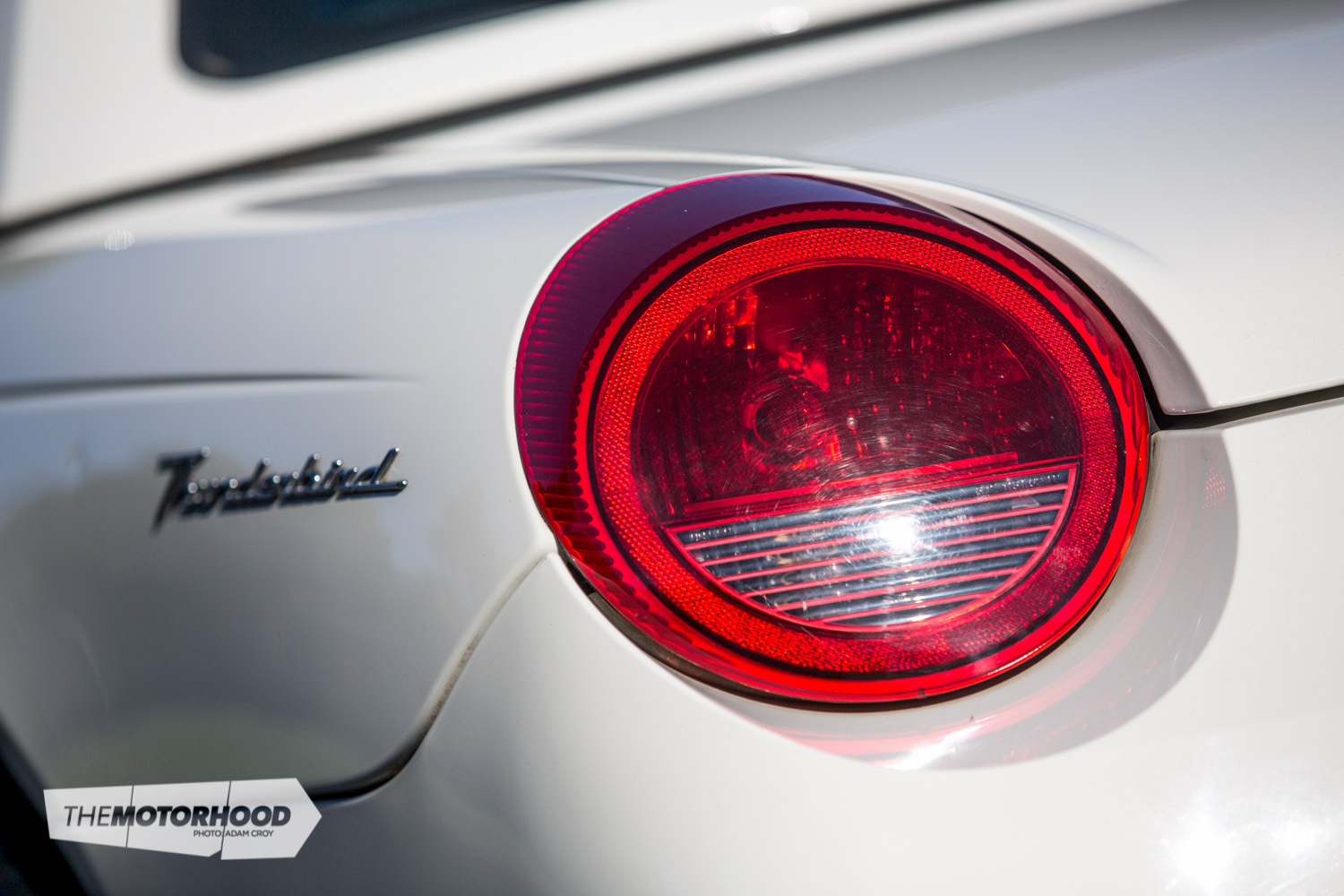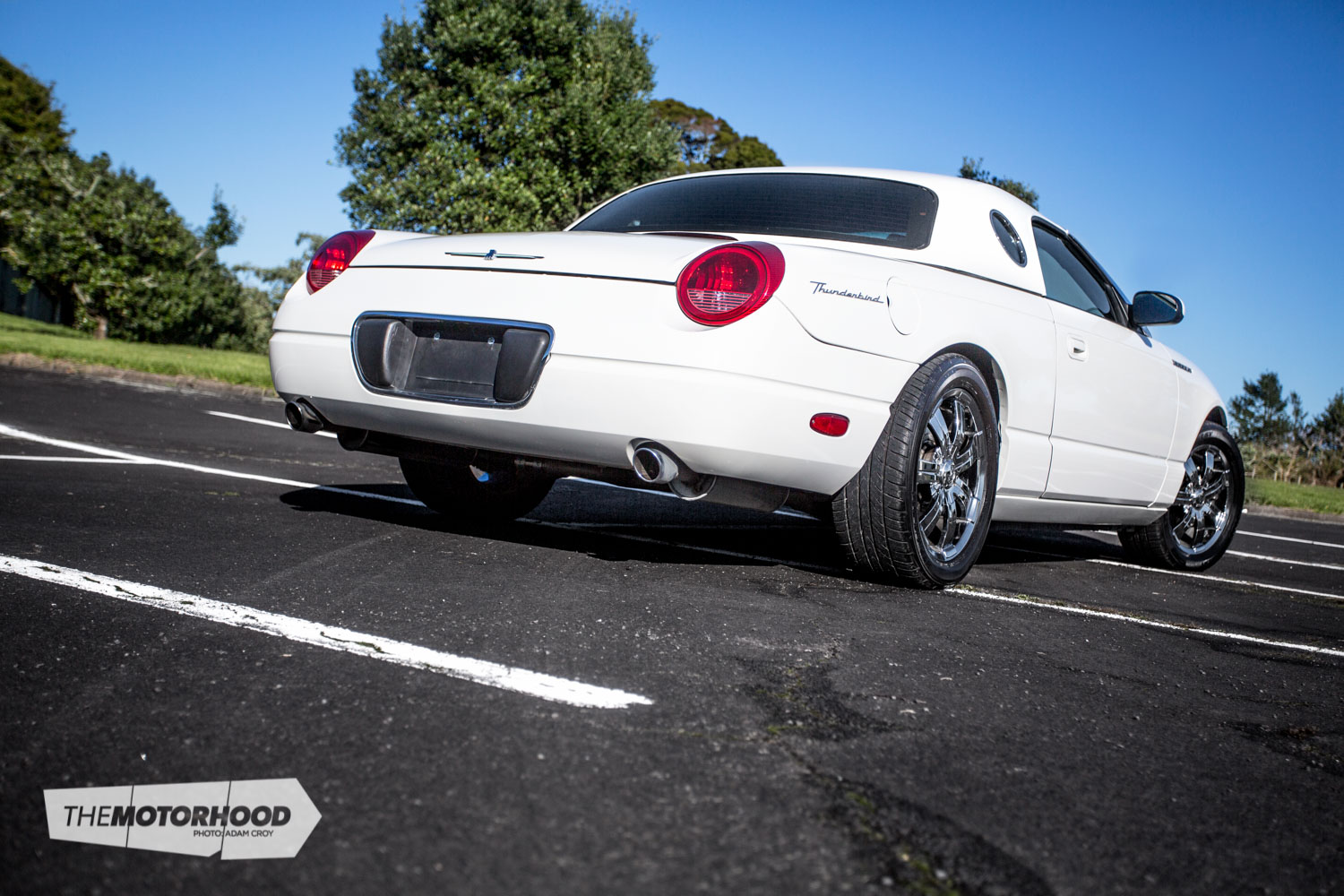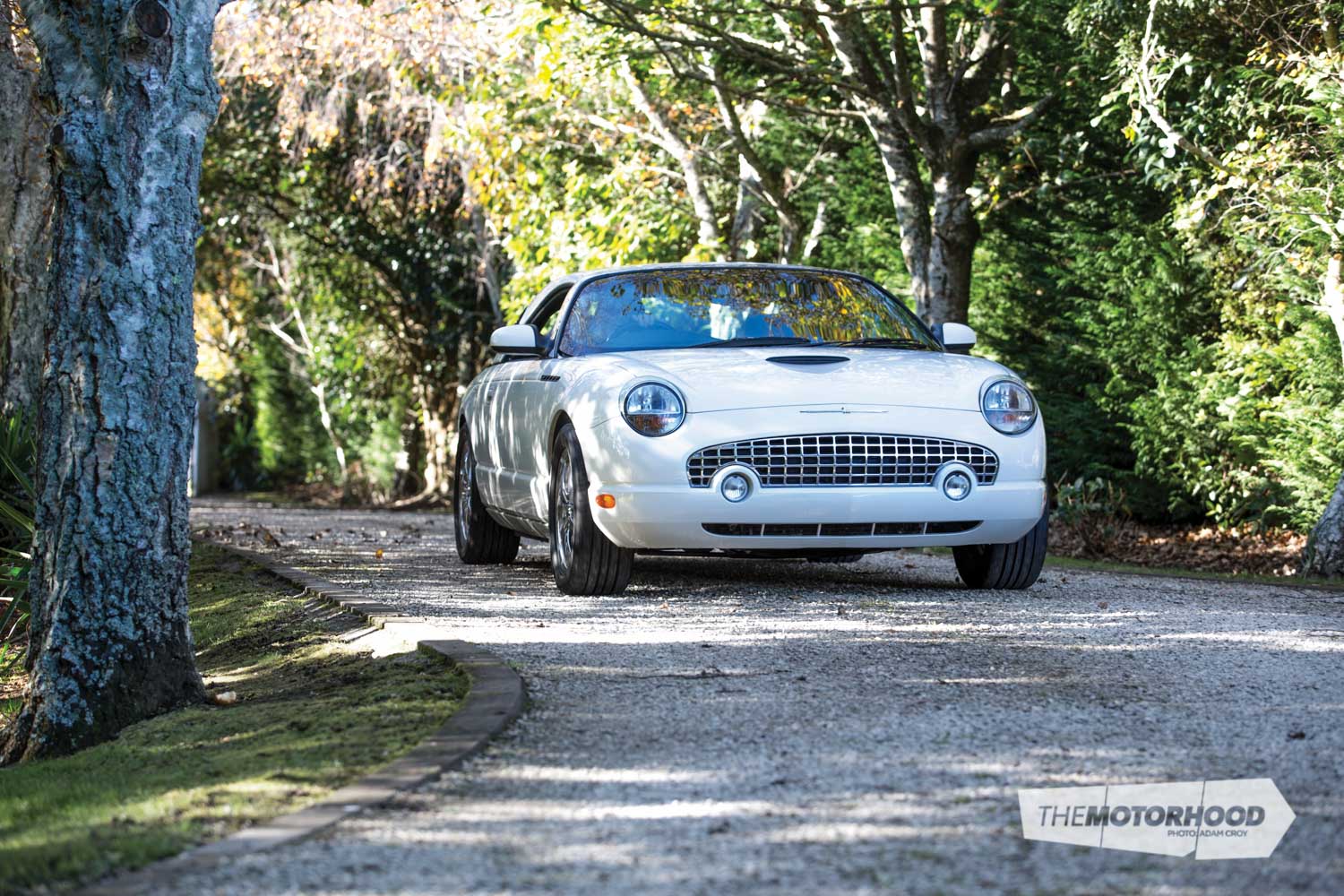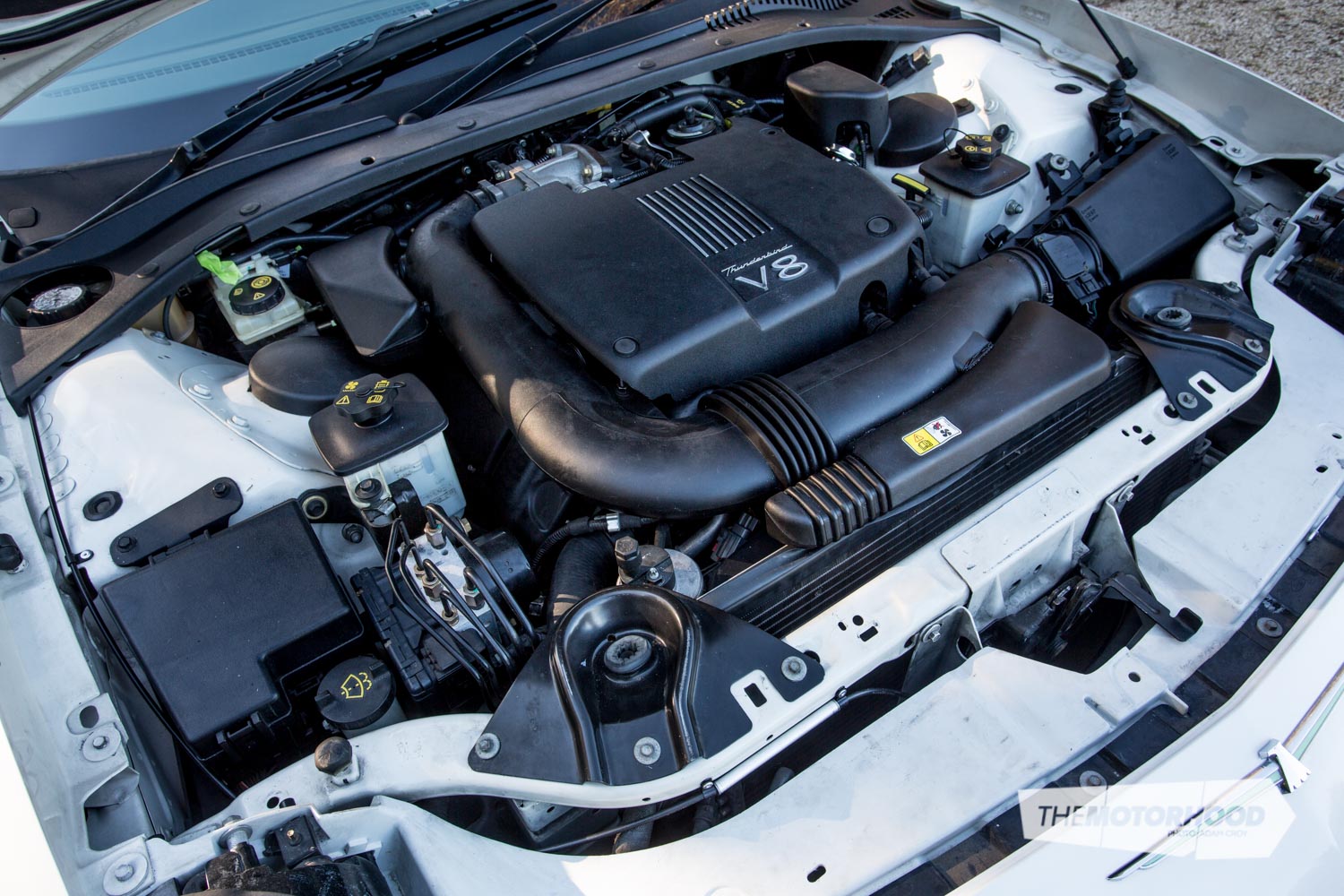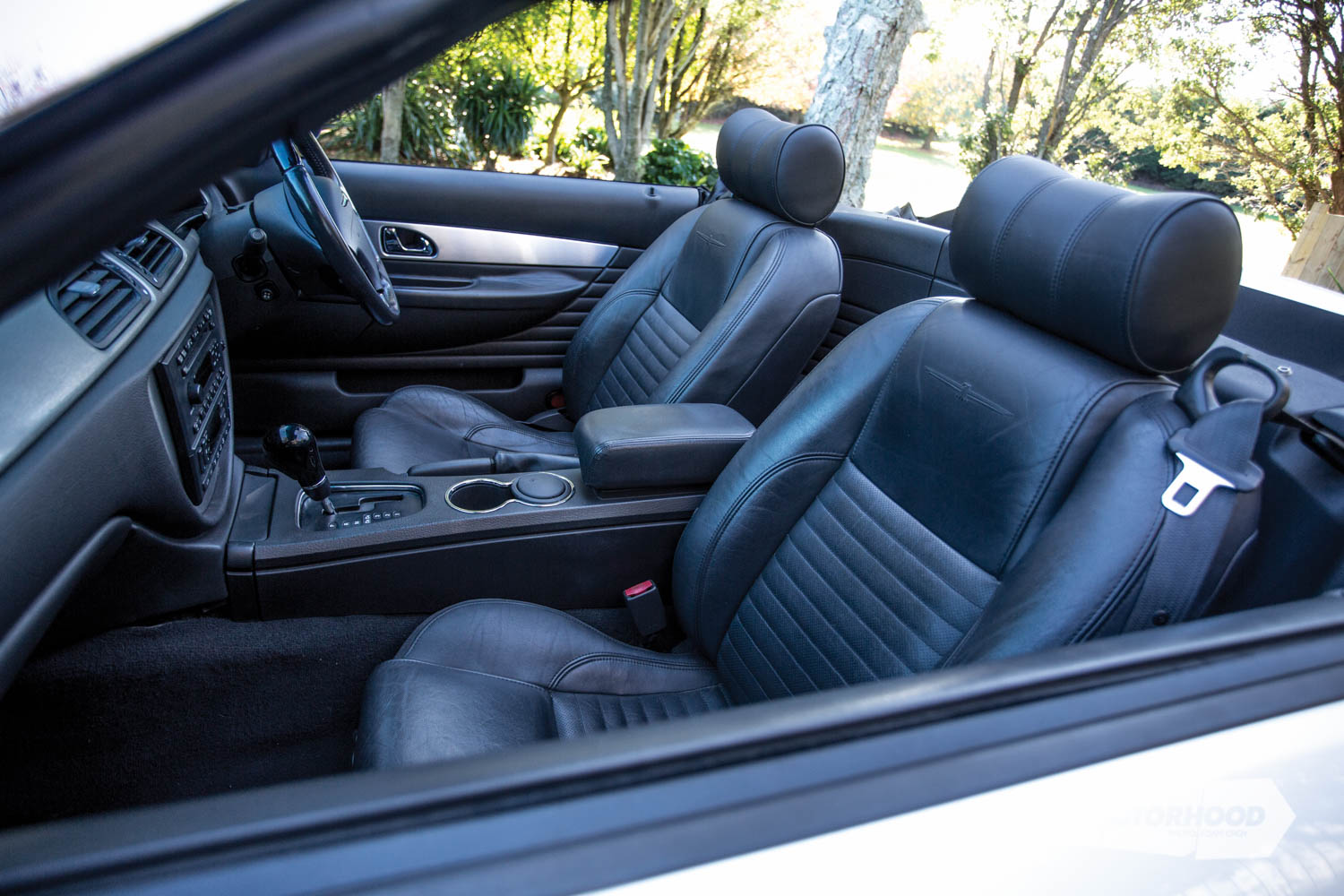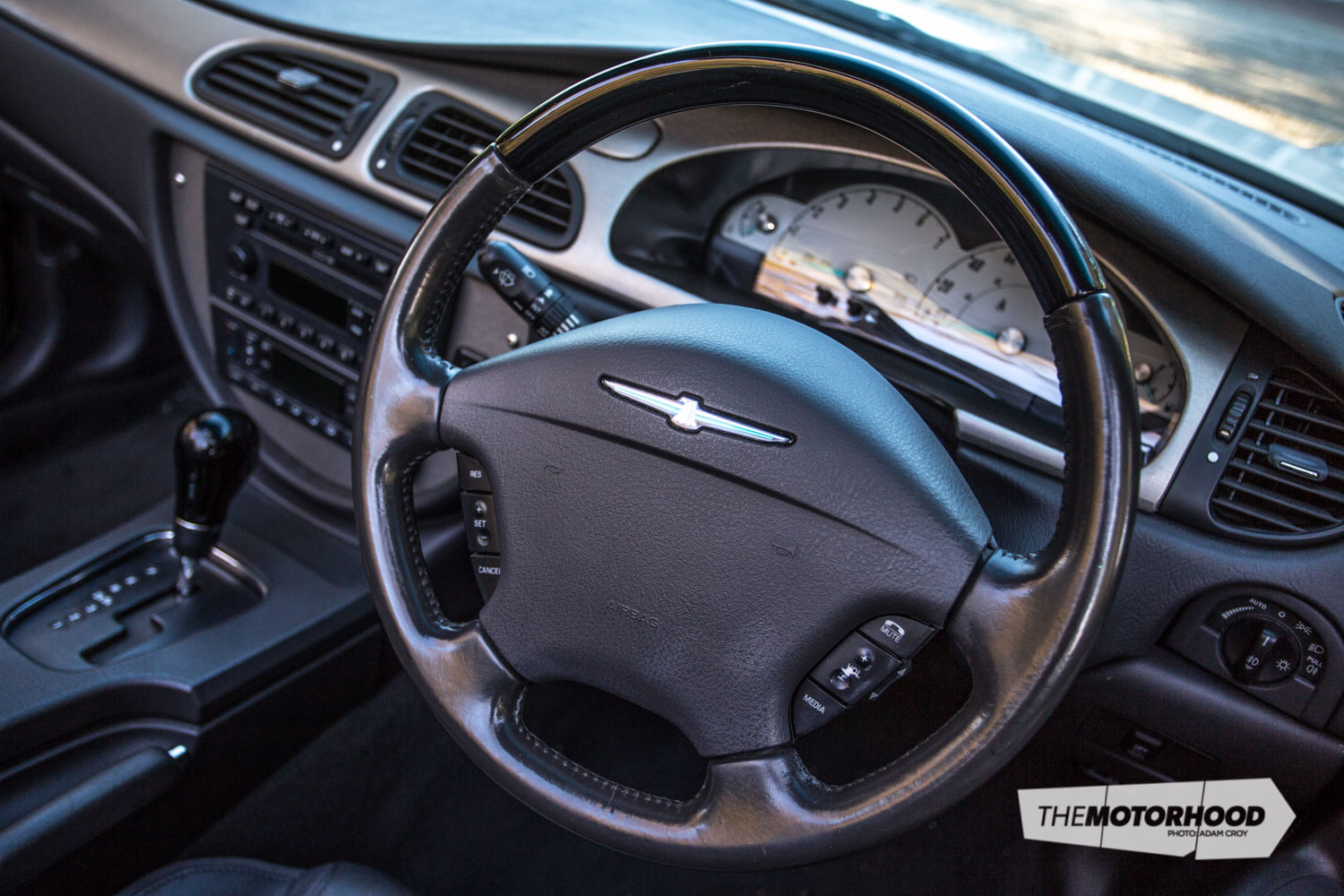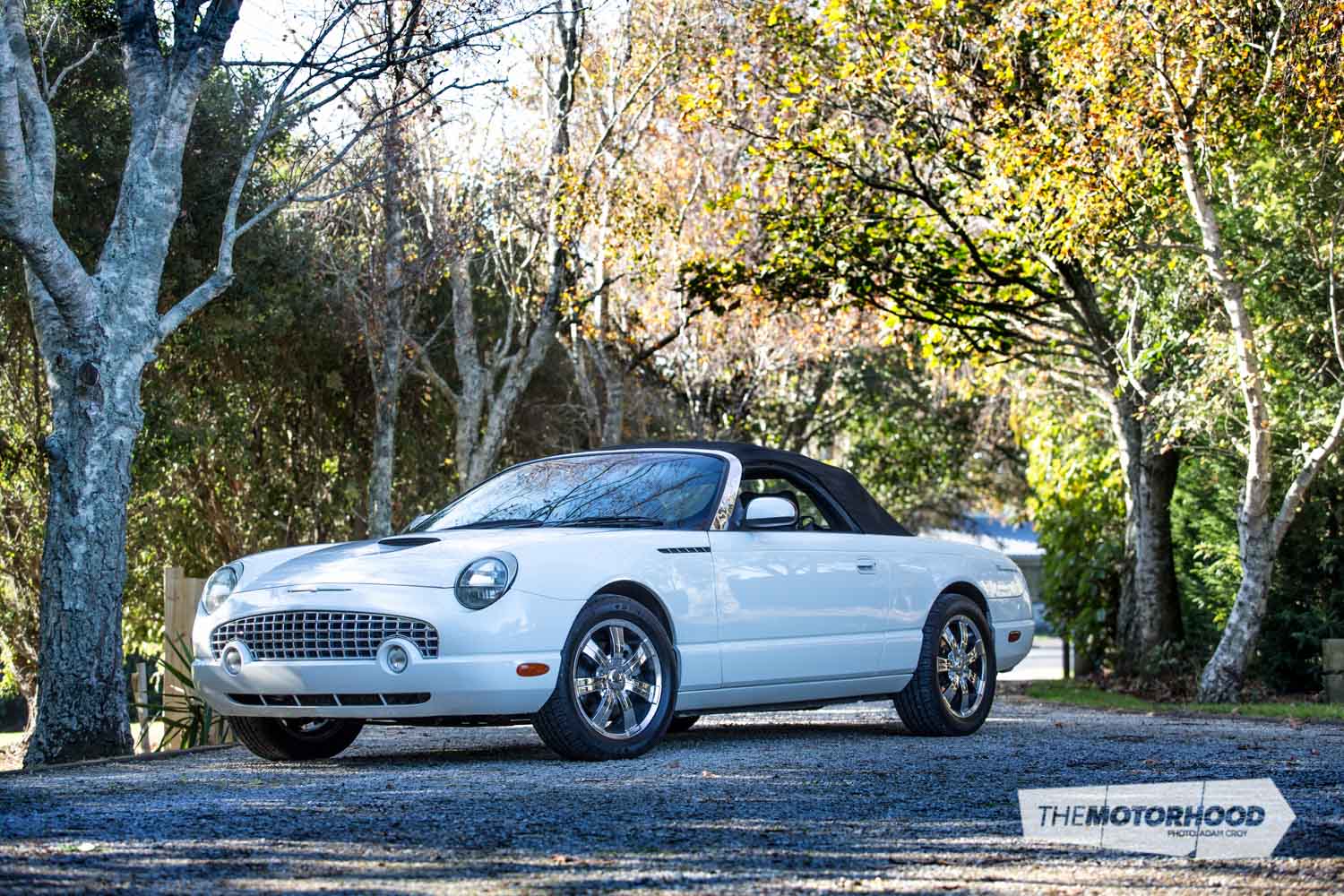data-animation-override>
“When Ford US recognized its own heritage and climbed on the then-popular craze for retro-designed cars, it did so by reviving its justly revered Thunderbird logo”
Back in the early ’50s, Chevrolet was the first US auto-maker to realize that some motorists craved cars which were rather more sporting than Detroit’s standard offerings. This trend — sparked largely by US servicemen returning from European postings following the end of World War II — lead to marques such as MG, Jaguar and Porsche quickly gaining popularity within a certain sector of the car-buying public. Of these, Jaguar’s XK120 would arguably exert the most influence — it is, perhaps, no coincidence that the first iteration of Chevrolet’s very first Corvette was, like the Jaguar, powered by a straight-six engine. Alas, the Blue Flame six was less impressive than the British firm’s highly-specc’d twin-cam unit. Indeed, the Chevrolet’s feeble power output almost led to the Corvette’s early demise.
However, famously, it would be a Ford that revived the Corvette — not to mention the involvement of Zora Arkus-Duntov and the addition of V8 power.

That Ford was, of course, the Thunderbird, and unlike Chevrolet, Ford got its sums right first time out. Although the Jaguar XK120 may have been a major influence on the design of the first Thunderbird, assessing its home market wisely, Ford toned down the Jaguar’s sportiness in favour of better comfort. Oddly enough, Jaguar later followed a similar route — the final XK150 being rather more of a highway cruiser than an out-and-out sports car.
The first-generation Thunderbird, a two-seater later dubbed the ‘Baby Bird’, only lasted for a few model years before being supplanted by the larger, four-seat second-series car in 1958. From that point on Ford shamelessly followed US motoring trends and fashions, and over the succeeding decades the Thunderbird evolved into a fat-cat cruiser saddled with tacky dress-up items such as vinyl roofs, and fake landau bars. If enthusiasts pined for the earlier cars, Joe Public needed little convincing, lifting the model to a sales peak in 1978.
From that point on sales declined, and in the ’90s, for the first time ever, the 10th-generation Thunderbird was only available with a V8 for a single year (the ’92 Sport Coupe). With sales dwindling even further, Ford eventually gave up trying and discontinued the Thunderbird after 43 years in continuous production — the final car being built on September 4, 1997. However, the Thunderbird story wouldn’t end there.
Birth of the retrobird

A small group of Ford designers was determined that the Thunderbird couldn’t be allowed to die, and as early as 1998 persuaded Ford to issue a design brief for a new model. This brief was passed to the company’s US design centres, as well as to Ghia in Italy and Ford (Germany).
During the latter half of the ’90s, retro styling became very fashionable amongst car-makers — resulting in nostalgic designs such as VW’s new Beetle, the PT Cruiser and Plymouth Prowler. In the light of this emerging new trend, that brief for a new Thunderbird lead directly to a US design which effectively modernized the reverse-wedge looks of the classic Baby Bird. After it won the support of Ford’s new chairman, Jacques Nasser, the scene was set for an all-new Thunderbird.
Ironically, considering the influence of the Jaguar XK120 over the original Thunderbird’s development, the basic mechanical underpinning of the proposed new model was Ford’s DEW rear-wheel-drive platform — a platform shared by the Lincoln LS and the Jaguar S-Type and, later on, the first series XF, the British firm having been acquired by Ford in 1999. Jaguar also supplied the new Thunderbird’s engine — the all-alloy AJ-30 V8.

Introduced in 2002, the 11th-generation Thunderbird was a strict two-seater carrying many design elements from the first Thunderbird. It was offered in two guises: the deluxe version came with a modern rendition of the Baby Bird’s iconic ‘porthole’ hardtop as well as an electrically operated soft-top. The premium model omitted the hardtop.
Acclaim was instantly heaped onto the new car — Motor Trend magazine named the Thunderbird as its Car of the Year, the fourth time a Thunderbird had won that award. Predictably, sales took off with a bang, while unscrupulous dealers took advantage of the situation by hiking prices.
Internationally, most people got their first look at the new Thunderbird in the 2002 James Bond outing, Die Another Day — a Coral-coloured example being driven by the Jinx character, played by Halle Berry. That film was something of a product-placement bonanza for Ford as, in addition to the Thunderbird, it also supplied an Aston Martin Vanquish and a Jaguar XKR — bearing in mind that, as well as Jaguar, at that time Ford also owned Aston Martin. Ford capitalized on the publicity garnered from the Bond film by producing a 007 Edition, and 700 of these Coral red cars (complete with Performance White hardtops) were built — each carrying a numbered plaque on their glovebox lids. Halle Berry was offered one of the 007 cars, but instead chose an Evening Black one.
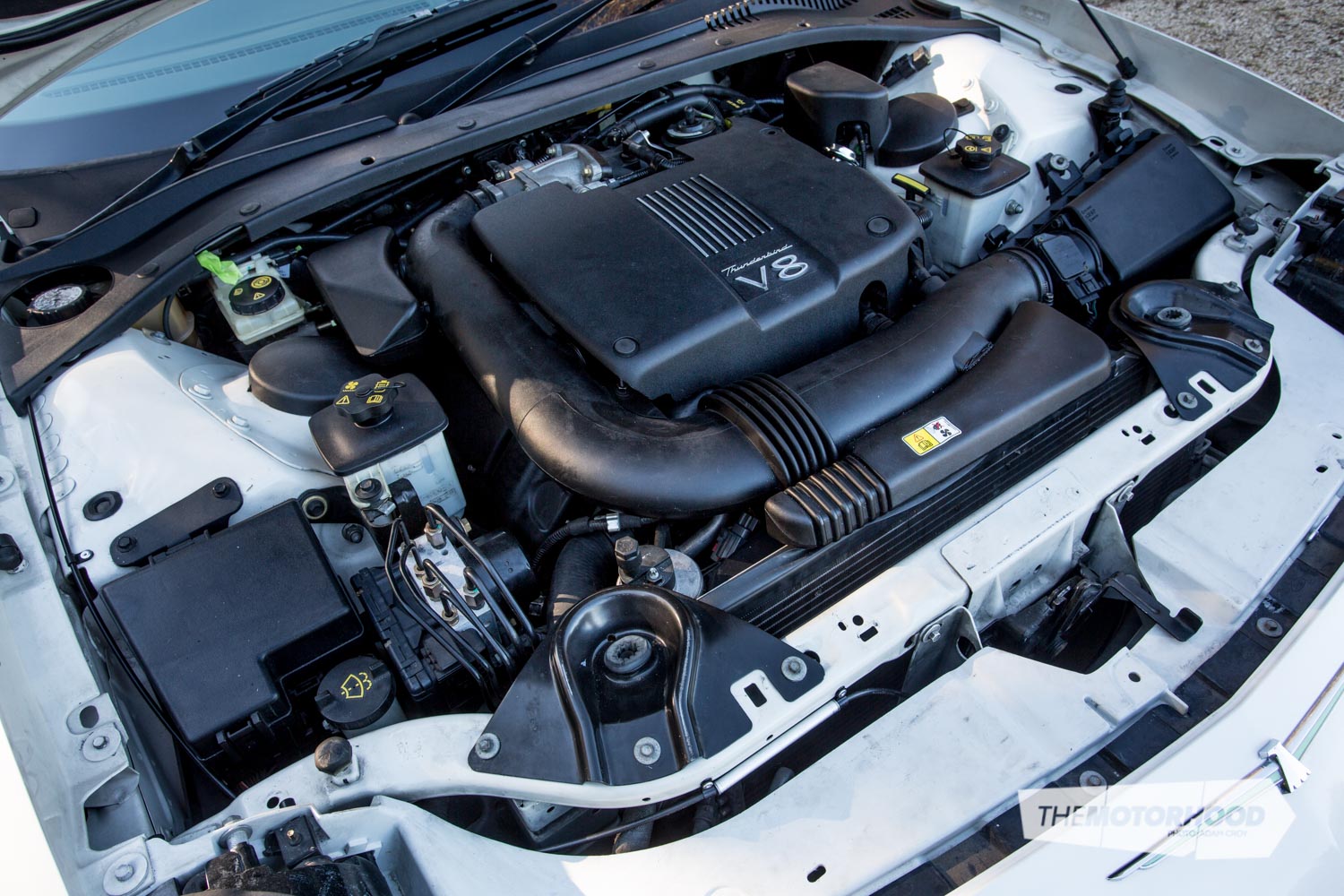
In 2002 Ford sold over 30,000 Thunderbirds, but sales quickly declined from that point on — in 2003 sales figures were half that.
This was the year the more powerful Jaguar AJ-35 V8 — complete with variable valve timing — lifted power output to 210kW, while a sportier five-speed manually-operated SelectShift transmission was also offered along with traction control, a restyled gauge cluster and new 17-inch alloy wheels. Despite these enhancements, sales continued to drop, and 2005 was the final year for the Retrobird, the last car rolling off the line at Ford’s Wixom plant on July 1. In that final year, Ford sold fewer than 10,000 Thunderbirds.
Right-hand bird

Almost exactly a decade after its final demise, I found myself at the wheel of a last-generation Thunderbird — a unique example containing a fair bit of Kiwi ingenuity. Imported into New Zealand by UDM Ltd, this Whisper White example has been locally converted to LHD by that company’s skilled technical team. The conversion was made possible by the platform the Ford shares with Jaguar’s S-Type — appropriate Jaguar parts being supplied by Beacham Jaguar. Apart from resiting the steering column, one of the most involved parts of the LHD conversion included the building of a one-off dashboard for the Thunderbird — not to mention the problem of getting both Ford- and Jaguar-supplied electronics to talk to each other.
The final result is a bit more of a Ford/Jaguar hybrid than the original car — readers with sharp eyes may be able to see that our feature car is actually fitted with a modified Jaguar S-Type dashboard. However, the gauges and central-column controls are pure Thunderbird — the Ford and Jaguar elements having been matched up very neatly.
Apart from the details listed above, along with the addition of later, 17-inch alloy wheels, the Thunderbird remains in standard trim — although the exhaust system has been upgraded in order to improve the rumble of the car’s Jaguar V8.
High-flying bird

Removing the Thunderbird’s hardtop is a two-man job — and a third would come in handy to avoid scratching the car’s body during removal or reattachment. Once removed, the soft-top is revealed, and although it operates electrically, a special Thunderbird-badged T-socket tool is required to secure the hood to the car’s windscreen frame, a fiddly job that could’ve been more efficiently achieved via a more usual over-centre latching system. With the soft-top up, rear three-quarter visibility is virtually zero — at least I now understand the reason behind Ford adding that distinctive porthole!
As the day of our road test turned out nice and sunny, the hardtop was unbolted so we could enjoy the Thunderbird al fresco — the open-air experience made even better by the lovely wuffle of the car’s Jaguar V8.
Up ahead, the Ford’s low hood scoop and the long sweep of its curvaceous front wings combined with the car’s curved, chrome-decked windscreen to provide a suitably retro-styled frame through which to observe the rapidly passing countryside. The next best view seemed to be from the side of the road, judging by the number of pedestrians who gave me the thumbs-up as I rumbled through town streets.

Out of town, and it was time to open up the taps on the V8 and give the Thunderbird its head. As expected, the car rides much more softly than an S-Type, also exhibiting rather more roll than the Jaguar. As well, the V8 seemed to have less of an edge, the Thunderbird’s throttle response notably more relaxed than that of the similarly powered Jaguar. However, none of this is really much of a disadvantage and, truth be told, the Ford actually handles very well, with bags of grip available, while the car’s long travel and very compliant ride ate up most road irregularities with ease. In the end, though, this is a car for relaxed long-distance cruising, push it too hard and that softly-softly suspension gets a little overwrought. No, it’s best to bear in mind that this last generation Thunderbird, like the original Baby Bird of the ’50s, was never intended to be an out-and-out sports car — so button off a bit, soak in the sound of the V8, and enjoy all the big smiles you’ll attract as you waft down the road.

Certainly our test car lived up to the Thunderbird’s original ideal — providing well-appointed accoutrements for two, more than adequate performance, plus a relaxed ride with surprisingly good handling and roadholding.
Of course, with so many high-performance parts available off the peg from Jaguar’s inventory, those looking for more hard-core thrills could always turn to the option of upping the Thunderbird’s big-cat quotient by adding in a heaping helping of S-Type R upgrades. A suspension set-up closer to the Jaguar’s would certainly sharpen up the Ford’s handling, while the R’s thunderous 300kW supercharged V8 would definitely give the Thunderbird a mighty performance punch.
That’d be a combination I’d be keen to sample!
2002 Ford Thunderbird
- Engine: Jaguar all-alloy AJ30 V8
- Capacity: 3950cc
- Bore/stroke: 86 x 85mm
- Valves: DOHC, four valves per cylinder
- Comp ratio: 10.55:1
- Max power: 188kW at 6100rpm
- Max torque: 362Nm at 4300rpm
- Fuel system: Multi-port fuel injection
- Transmission: Ford 5R55E five-speed auto
- Suspension F/R: All independent via upper and lower control arms, coil springs and anti-roll bars
- Steering: PAS, rack and pinion
- Brakes: Ventilated disc
- Wheels/tyres: Cast alloy/Michelin Pilot 235/50 R16
- Overall length: 4732mm
- Width: 1829mm
- Height: 1323mm
- Wheelbase: 2723mm
- Track F/R: 1537/1529mm
- Kerb weight: 1712kg
- Max speed: 241kph
- 0–100kph: 7.0 seconds
- Standing ¼ mile: 15.28 seconds
- Production: 68,098 between 2002–2005
This article was originally featured in New Zealand Classic Car Issue No. 295. Pick up a print copy or a digital copy of the edition here:


